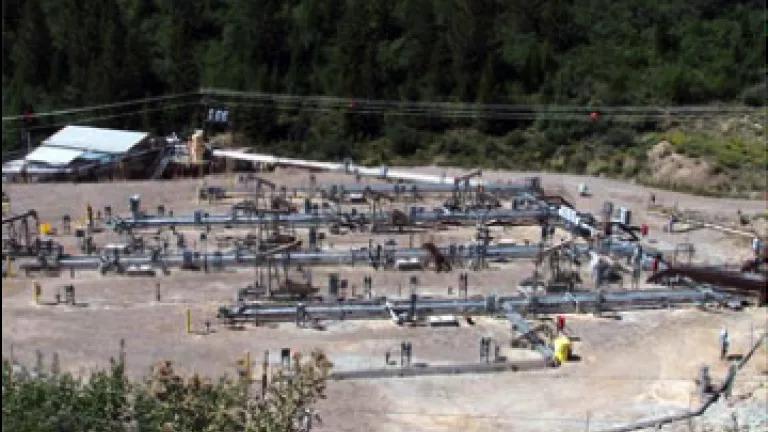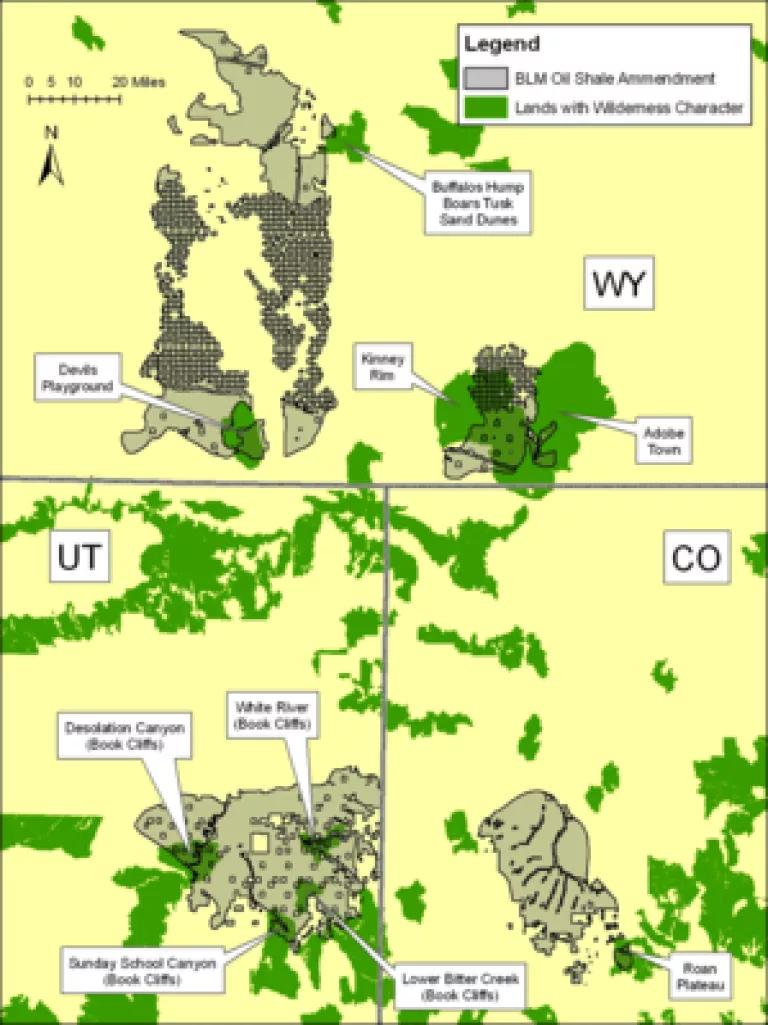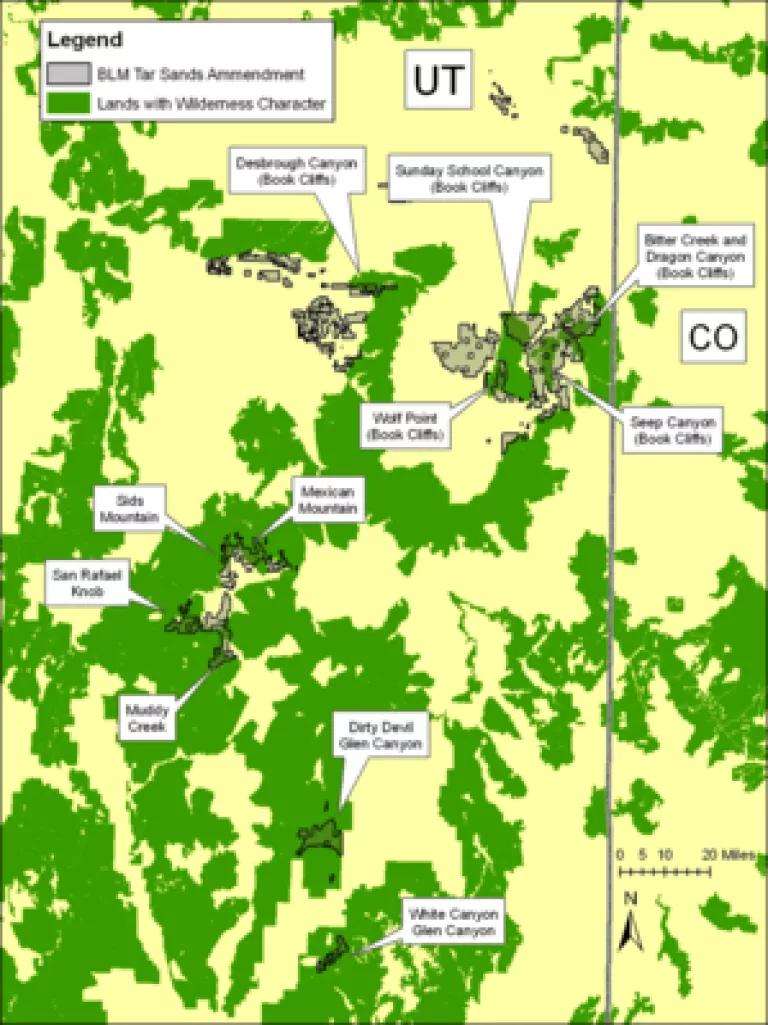The Folly of Oil Shale - Reports Highlight the Tremendous Risks with this Dirtiest of Fuels

North America stands at an energy crossroads. As cheap, plentiful, conventional oil becomes a luxury of the past, we now face a choice: to set a course for a more sustainable energy future of clean, renewable fuels, or to develop ever-dirtier sources of fuel derived from fossil fuels—at an even greater cost to our health and environment. One of these dirty fuel sources that has drawn much attention as of late is oil shale. Oil shale – which should not be confused with natural gas derived from shale formations – is a solid-state organic-rich, sedimentary rock, found largely in the Western United States.
The process of oil shale extraction, which is akin to literally squeezing oil out of solid rock, incurs substantial environmental impacts for air, land, wildlife, and water resources (see NRDC’s recently released report that substantiates that within the Colorado River area, 30 million people from Wyoming to Southern California who depend on the Colorado River as a major source of water supply, including farmers who produce 15 percent of our nation’s crops, could face unprecedented shortages as oil shale development potentially moves forward in the Colorado River Basin). And if that was not bad enough, oil shale extraction also requires enormous amounts of energy to heat the oil shale, which basically defeats the whole purpose of developing a new energy source if you have to put more energy into extraction versus the total energy that is returned.
The Shell Mahogany site in western Colorado, where Shell conducts oil shale research projects. This picture is representational of an in situ oil shale experiment. In order for such technology to become commercially viable, Shell would have to construct similar infrastructure on thousands of thousands of contiguous acres, practically as far as the eye could see. photo: Dan Lashof, NRDC
Choosing an oil shale path has enormous consequences for the air we breathe, the water we drink, our climate and wildlands. And while commercial scale oil shale is still a theoretical pipedream in regard to the immaturity of the technology in extracting oil shale, there are a number of politicos who continue to promote oil shale as a cure-all panacea for America’s energy woes. These proponents might as well be medieval alchemists, for they deny a number of immutable truths regarding the fallacies that surround oil shale. But facts need not get in the way of political convenience, and in a week’s time the House Natural Resources Committee will be holding a Colorado field hearing to promote oil shale development. This hearing follows on the heels of a number of newly emergent legislative vehicles that would seek to gut current environmental protections that safeguard against environmental inappropriate oil shale development.
Given that oil shale continues to be an unfortunate distraction from adopting a transformative, logical, and efficient energy future, NRDC has committed to fully represent the numerous and severe impacts associated with oil shale development. The first of these analyses was an assessment that detailed the considerable global warming risks associated with oil shale development. Another study is being released this week that spells out the potential impacts of oil shale development on the water supplies of the Colorado River, a resource that is the economic and environmental lifeblood for much of West (my colleague Barry Nelson has more to say about this key report in his blog).
Lastly, over a year ago, NRDC produced a GIS analysis that investigated the likely direct environmental impacts to wildlife and wildlands associated with potential oil shale and tar sands development on federal lands in Colorado, Utah, and Wyoming. This particular analysis was necessary given that the nation was contemplating commercial oil shale leasing in the region based upon favorable leasing rules that were adopted in the midnight hour of the Bush administration. Thankfully, the Obama administration, realizing the unsound nature of those rules, has sought to develop a new leasing system that places more consideration for other environmental values. But that is where the Congressional field hearing is so pivotal, for the parochial interests of Big Oil and the Republicans who answer to these moneyed interests, would like nothing more than to repeal the current Obama administration process and go back to a system where Big Oil calls all of the shots. Given such a threat, it is worth exploring how an oil shale industry might impact the American West United States (if industry has its way again).
The majority of the world’s oil shale resources are found in the Green River formation, a geological area that covers 16,000 square miles in northwest Colorado, northeast Utah, and southwest Wyoming—the best part of held in trust by the federal government. The Green River Basin is also home to the nation’s most well known tar sands formations—much of it also managed by the Bureau of Land Management (BLM). The commercial leasing and production of the Green River Basin oil shale resource has been on the table as a potential source of ‘unconventional’ liquid fuels since the late 19th Century. However, repeatedly, the economics and technical hurdles associated with oil shale production have precluded commercially viability in the region. The established infeasibility of extracting these resources did not deter Vice President Cheney’s Energy Policy Task Force, or the backers of the Energy Policy Act of 2005, to seek additional avenues to encourage development of this resource. The Energy Policy Act of 2005 incorporated provisions that required the Department of Interior to develop a commercial leasing program.
In December 2007, the BLM published the draft Oil Shale and Tar Sands Programmatic Environmental Impact Statement (PEIS) that in theory was suppose to analyze the impacts associated with the leasing of public lands for commercial oil shale development. After the BLM circulated an administrative draft PEIS among cooperating agencies, the BLM came to the conclusion that critical information regarding the nature of oil shale was too speculative in nature to initiate a final decision on issuing commercial leases. But rather than acting on this deficit, BLM abrogated its responsibility to conduct a ‘hard look’ to fully disclose the cumulative impacts that a commercial oil shale industry would render upon the federal resources and the region as a whole and instead chose to implement a commercial leasing system based upon thin air. Remarkably, the rule was issued despite the agency’s finding that there was no information available to detail the future impacts of such a rule, and concluded that, “Because there is no commercial oil shale industry in States, there is no data available on what, if any, extraction process will be commercially viable, and thus there is uncertainty about the precise impacts from commercial oil shale development. “
Because the BLM inexplicably failed to do what was required of them in analyzing and disclosing potential and foreseeable impacts, NRDC set out to at least quantify some of the key potential repercussions. In short, we focused on three critical categories that would be irrevocably impacted:
- Wilderness lands
- Critical habitat for threatened and endangered species
- Key sage-grouse habitat
The following charts and maps speak for themselves. But in short, if the Bush era rules were to be implemented, NRDC has demonstrated that over two-million acres of key habitat and wilderness would likely be sacrificed for domestic oil shale and tar sands development. Wilderness areas like Wyoming’s incomparable Adobe Town region would be opened, nearly all leasing would take place on key sage grouse habitat, and other vital species such as migrating deer along with endangered fish species would see their habitats totally destroyed.
In sum, the question should not be whether oil shale is a viable technology as being poised by a number of Congressional members, the question should be: how can we even begin to afford to sacrifice the region’s water supplies, destroy the unique wildlife and wildlands of this Western area, while also dedicating a disproportionate amount of costly energy at the expense of adopting cleaner and cheaper energy sources like wind, solar, and geothermal…all for a energy source that amounts to fool’s gold.
Total critical wildlands and wildlife areas under threat:
|
Available BLM Lease Areas Type and State |
Total Acres Available for Lease Sale |
Total Acres Overlapping Wilderness and Key and Critical Wildlife Habitat |
|
Oil Shale, Colorado |
359,798 |
91,362 |
|
Oil Shale, Utah |
630,971 |
395,336 |
|
Tar Sands, Utah |
431,224 |
302,047 |
|
Oil Shale, Wyoming |
1,000,453 |
564,152 |
|
Total (note: there is some overlap between Utah tar sands & oil shale areas) |
2,372,033 |
1,316,528 |
Intersection between sage-grouse range and BLM leasing areas:




